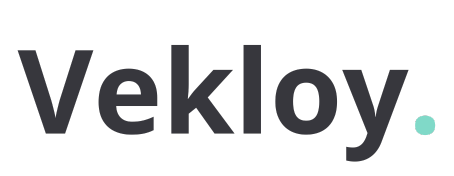Unlocking Growth: The Ultimate Guide to Funding for E-Commerce Businesses

Starting and scaling an e-commerce business often requires a significant investment in various areas, from inventory management and website development to marketing and logistics. While the potential for success in e-commerce is immense, securing adequate funding can be one of the most challenging aspects of growing an online store. Whether you’re a startup or looking to expand your existing business, understanding your funding options is crucial for sustainable growth. In this comprehensive guide, we’ll explore various ways to Funding for E-commerce Business and how to choose the best financing option based on your goals.
Why Funding for E-Commerce Business is crucial for Success
Funding is the backbone of any growing e-commerce business. It allows entrepreneurs to:
- Stock inventory: Ensuring your products are available for sale is essential for attracting and retaining customers.
- Build a strong online presence: Investment in your website, SEO, and digital marketing campaigns is crucial for visibility in a crowded marketplace.
- Enhance customer experience: To stand out in a competitive industry, you need to invest in customer service, user-friendly interfaces, and efficient delivery systems.
- Scale operations: As your e-commerce business grows, so does the need for expanded storage, better logistics, and more efficient technology.
However, not every entrepreneur has the capital to kickstart or expand their business. That's where funding options come into play.
Common Types of Funding for E-Commerce Businesses
The funding landscape for e-commerce businesses has evolved considerably over the past few years. Let’s explore the various options available to entrepreneurs looking to secure capital for their online stores.
1. Self-Funding (Bootstrapping)
For many e-commerce entrepreneurs, self-funding or bootstrapping is the first step toward starting a business. This method involves using personal savings, credit cards, or loans from friends and family to finance your e-commerce operations. Bootstrapping offers several benefits, such as full control over your business and the ability to avoid external debts or equity loss. However, the downside is that it carries a significant personal financial risk, and the initial funds may be limited.
Pros:
- Full control over business decisions.
- No interest payments or equity loss.
Cons:
- High financial risk for the entrepreneur.
- Limited funding based on personal savings.
2. Small Business Loans
Traditional small business loans from banks or credit unions are another popular funding option for e-commerce businesses. These loans typically come with lower interest rates compared to other financing methods. To secure a small business loan, you’ll need to present a solid business plan, demonstrate your ability to repay the loan, and show your business's financial health. These loans can be used for inventory, operational costs, and growth initiatives.
Pros:
- Lower interest rates compared to other loans.
- Can provide significant funding for growth.
Cons:
- Lengthy approval process.
- Strict eligibility criteria, including good credit history.
3. E-Commerce Grants
Various government programs, nonprofit organizations, and private companies offer grants for e-commerce businesses. Unlike loans, grants do not require repayment, making them an attractive option for entrepreneurs. However, grants can be highly competitive, and the application process often requires meeting specific criteria related to your business type, location, and growth potential.
Pros:
- Free funding that does not need to be repaid.
- Great for businesses with a strong social impact or innovative business models.
Cons:
- Highly competitive and difficult to obtain.
- May require a detailed application and adherence to specific conditions.
4. Venture Capital and Angel Investors
Venture capital (VC) and angel investors are other options for businesses looking to scale quickly. Venture capital firms typically invest large sums of money into high-growth companies in exchange for equity in the business. Angel investors, on the other hand, are individuals who provide funding for early-stage businesses in exchange for equity or convertible debt. Both options can provide significant funding but come with the trade-off of giving up a portion of your ownership and control.
Pros:
- Access to large amounts of funding.
- Expert advice and mentorship from investors.
Cons:
- Giving up a portion of ownership.
- Pressure to achieve rapid growth and profitability.
5. Crowdfunding
Crowdfunding has become a popular funding method for e-commerce businesses in recent years. Through platforms like Kickstarter, Indiegogo, or GoFundMe, entrepreneurs can raise money from a large number of individuals who believe in their product or service. Crowdfunding not only provides financial support but also acts as a marketing tool, helping you gauge interest in your product before it’s even launched.
Pros:
- No need to give up equity or take on debt.
- Can help validate your product idea and attract early customers.
Cons:
- Requires effective marketing and outreach.
- May not guarantee success; many crowdfunding campaigns fall short of their funding goals.
6. Business Credit Cards
For smaller or short-term financing needs, business credit cards can be a viable option. Business credit cards offer a revolving line of credit that can be used for day-to-day expenses, such as purchasing inventory or paying for digital marketing campaigns. However, they tend to have higher interest rates than traditional loans, so it’s important to pay off balances promptly to avoid accruing significant debt.
Pros:
- Quick access to credit.
- Rewards and benefits, such as cash back or travel points.
Cons:
- High interest rates and fees.
- Risk of accumulating debt if not managed properly.
7. Peer-to-Peer Lending
Peer-to-peer (P2P) lending platforms like LendingClub and Prosper allow businesses to borrow funds directly from individuals, bypassing traditional financial institutions. These platforms connect borrowers with investors who are looking to lend money at competitive interest rates. For e-commerce businesses, P2P lending can be an excellent option if traditional loans are difficult to obtain.
Pros:
- Often quicker and more flexible than traditional loans.
- Competitive interest rates.
Cons:
- Can still carry interest rates depending on credit score.
- May involve fees or penalties for early repayment.
Choosing the Right Funding Option for Your E-Commerce Business
When it comes to funding your e-commerce business, there is no one-size-fits-all solution. The best option for you will depend on various factors, such as the size of your business, your credit history, your growth ambitions, and how much control you're willing to give up.
- Assess Your Needs: Are you looking for quick funding for inventory, or are you aiming for long-term growth and scaling?
- Evaluate Your Risk Tolerance: Do you want to maintain full control, or are you comfortable giving up equity?
- Consider the Costs: What are the interest rates, fees, and repayment terms associated with each option?
By carefully considering these factors, you can select the funding source that aligns best with your business goals.
Conclusion
Securing funding for your e-commerce business can be one of the most important decisions you make. Whether you choose to fund your business through personal savings, small business loans, grants, or investment, each option has its benefits and challenges. By understanding your needs and evaluating the different funding opportunities available, you can make an informed decision that will help your e-commerce business thrive and grow in today’s competitive online marketplace.
What's Your Reaction?


































































